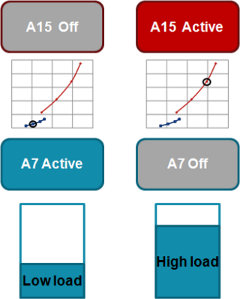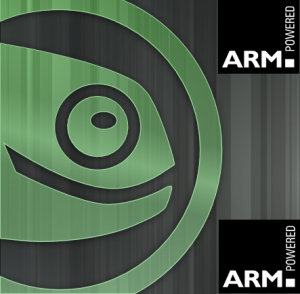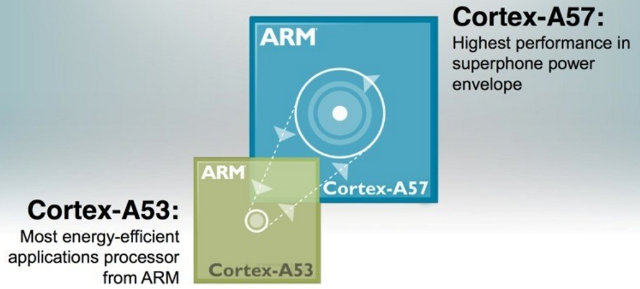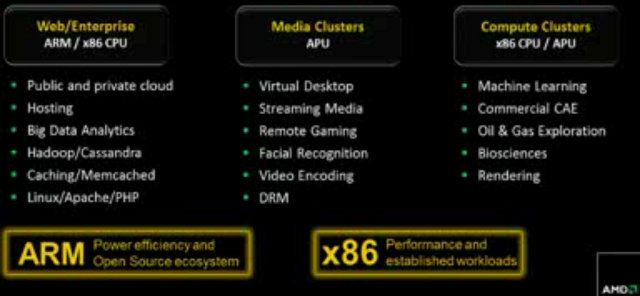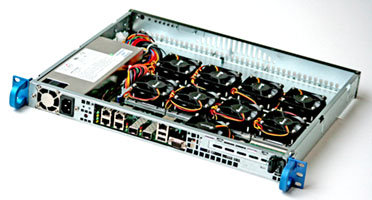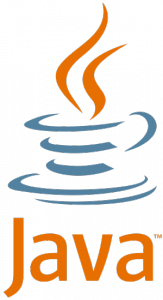There was a big,LITTLE mini-summit during Linaro Connect Europe 2012, where an update was given on current big.LITTLE implementations and the results of measurement of power vs performance. Big.LITTLE Processing Implementations Overview As briefly mentioned in “Versatile Express TC2 (2xA15, 3xA7) Development Board at ARM Techcon 2012“, there are 2 big.LITTLE implementations: In-kernel switcher (IKS) This implementation is already available through Linaro and only required minimal changed to the kernel as it mainly an augmentation to DVFS (Dynamic Voltage and Frequency Scaling) except instead of only adjusting voltage and frequency depending on the load, it will also move the load to different cores. The main drawback is that this implementation only uses half the cores. For example, on a 2x Cortex A15 / 2x Cortex A7 system, it can only use 2 cores at the same time (either A15 or A7 cores), as the load is managed between one type […]
openSUSE 12.2 for ARM is Now Available for Beagleboard, Pandaboard, Efixa MX and More
The first stable release of openSUSE for ARM has just been announced. openSUSE 12.2 for ARM is officially available for the Beagleboard, Beagleboard xM, Pandaboard, Pandaboard ES, Versatile Express (QEMU) and the rootfs can be mounted with chroot, but “best effort’ ports have been made for Calxeda Highbank server, i.MX53 Loco development board, CuBox computer, Origen Board and Efika MX smart top. Work is also apparently being done on a Raspberry Pi port which should be available for the next release. openSUSE developers explains that almost all of openSUSE builds runs on these platforms (about 5000 packages). Visit “OpenSUSE on your ARM board” for download links and instructions for a specific ARM board. More details are available on the wiki page. openSUSE has limited resources for ARM development, so If you’d like to help with development (e.g. fixing builds), visit ARM distribution howto page to find out how to get […]
Versatile Express TC2 (2xA15, 3xA7) Development Board at ARM Techcon 2012
If you’ve been following Linaro work, you may have read they develop big.LITTLE processing on TC2, a Test Chip based on 2 Cortex A15 cores and 3 Cortex A7 cores. Charbax is at ARM Techcon 2012 and he shot an interesting video showing 2 Versatile Express development boards based on TC2 demonstrate different big.LITTLE processing schedule strategies: The first scheduling strategy switches between Cortex A15 and Cortex A7 depending on the load required. The second scheduling strategy makes use of 5 cores at the same time and runs high load tasks on the Cortex A15 cores whereas simpler tasks are run on Cortex A7 core. This is only available on Android and Linux and the moment. TC2 is an actual silicon (not FPGA), and as they opened the casing of the development kit (Around 5:00 in the video), you’ll see a fan to cool down the SoC as it is […]
ARM Unveils its First 64-bit Cores: ARM Cortex A53 (LITTLE) and Cortex A57 (big)
ARM Techcon 2012 started yesterday with a major announcement, as ARM unveiled the ARM Cortex A50 series, the first 64-bit ARM Core based on ARMv8 architecture. The company announced 2 cores that can be used independently or in combination to take advantage of big.LITTLE processing: Cortex-A57 – 64-bit core that offers 3x the performance of 2012 superphone in 32-bit, 5x power-efficiency and is scalable beyond 16 cores. It’s the big core in big.LITTLE. Cortex-A53 – 64-bit core that offers the same performance as Cortex A9 but with 4x power efficiency and 25% the size of today CPUs. It’s the LITTLE core in big.LITTLE. Those cores manufactured using 28nm, 20nm and eventually 14nm process technology will be used in smartphones, tablets. mobile computers and servers (See AMD/ARM announcement). They’ll be software compatible with ARMv7-A processors (Aarch32) which should greatly facilitate the transition and support both 64-bit and 32-bit OS and applications, […]
AMD To Provide 64-Bit ARM Opteron Processors for the Server Market
AMD announced it will design processors based on 64-bit ARM technology in addition to its x86 processors for the cloud and data center servers. AMD will be the first company to provide both x86 and ARM solutions to the server market, and the first ARM-based server CPU is scheduled for 2014. There aren’t much details at this time, but AMD did say it will be take advantage of AMD SeaMicro Freedom supercompute fabric in order to link CPU, Ethernet and Storage and the processor will be sold as an AMD Opteron CPU. Interestingly, the company does not plan to design 64-bit ARM processor for the client market (e.g. Windows RT) for the time being. Red Hat and AMD partnered for the server software, and Red Hat has started to work to bring support for the next generation of 64-bit ARM server processors to the Fedora Project include 64-bit ARM OpenJDK. […]
Codethink Launches The Baserock Slab ARM Server
Codethink has just announced an ARM based server called “The BaseRock Slab” powered by Marvell ARMADA XP quad core ARMv7-A processors with 2 GB RAM and 30GB (up to 120GB) mSATA SSD Storage per node, which targets applications such as cloud computing infrastructure and native ARM build and test. This 32 cores server comes in a 1U chassis (483mm x 44mm x 355m), is powered by a 260 PSU, integrates eight Cogent CSB1726-ArmadaXP SoM (Marvell Armada XP quad-core ARMv7-A CPUs, 1.33Ghz + 2 GB ECC DDR3 RAM) in to a carrier board featuring the following: 30GB (max 120GB) mSATA SSD, max 250MB/sec read/write, per SoM SATA port for additional dedicated storage, per SoM Dual 2.5Gbit/s full-duplex ethernet, trunkable into a single 5Gbit/s link Management SoM for remote power, fan and reset control Firmware upgrade via the network The server is managed by Cogent CSB1724 SoM powered by Marvell Armada 300 […]
Oracle releases JDK for Linux ARM (Soft-Float Only)
Oracle announced the availability of JDK 7 Update 6 which introduces a JDK for Linux on ARM v6 and v7 architecture. This JDK is aimed at “general purpose” ARM systems, such as ARM micro-servers and ARM development platforms. This new JDK for Linux on ARM is licensed under the Oracle Binary Code License, and can be downloaded at no cost for development and production use on general-purpose platforms. For embedded use such as an industrial controller or a kiosk appliance, a commercial license would be required. Here’s how Oracle summarizes the ARM Linux JDK features: This port provides 32-bit binary for ARMv6 and v7, with full support for Swing/AWT, both client (C1) and server (C2) compilers and runs on most Linux distributions. One caveat is that the current binary is softfloat ABI only, so it won’t work with (for example) the Raspbian distribution which uses the hardfloat ABI. We are […]
ARM Demonstrates Mali-T604 GPU in Samsung Exynos 5 Dual Cortex A15 Processor
For the very first time, ARM showcased on of their latest GPU, the Mali T-604, at SIGGRAPH 2012. There were 3 demos running in a tablet reference platform based on Samsung Exynos 5 Dual Cortex A15 processor clocked at 1.7 GHz: Timbuktu 2 showing improvement brought by OpenGL ES 3.0 such as higher details buffers, shadow comparison, etc… Hauntheim showcasing multiple lightings accelerated with GLES 3.0 and OpenCL (GPU compute) Enlighten, a demo where you can adjust the sun position and see the building shadows move smoothly in real-time.


